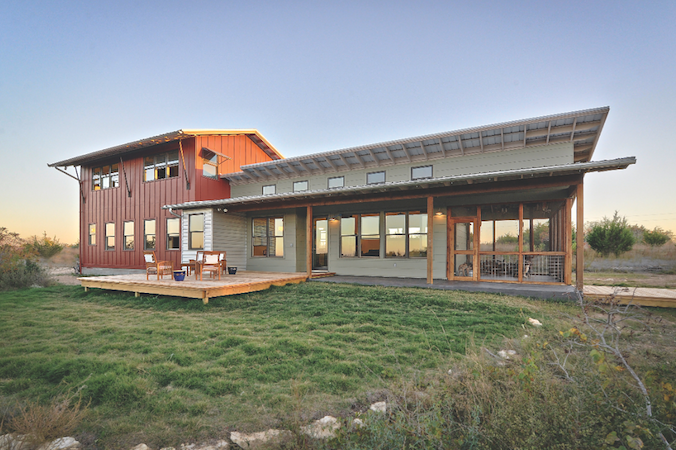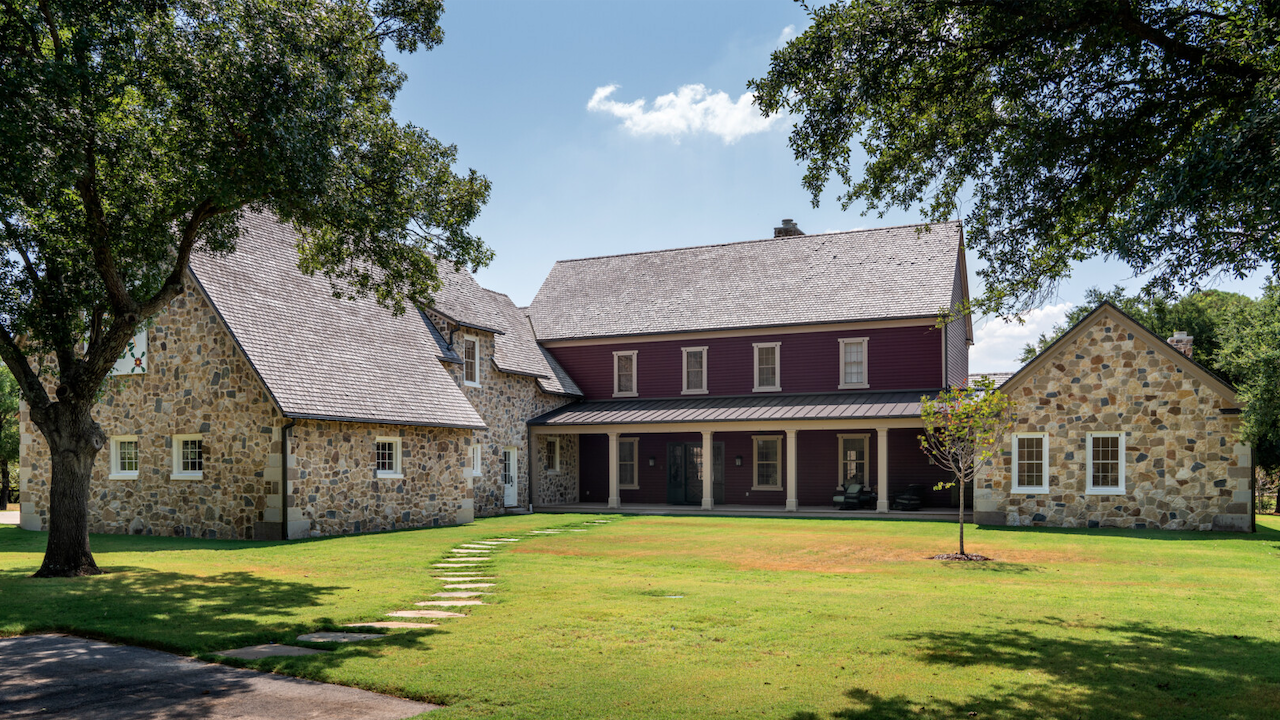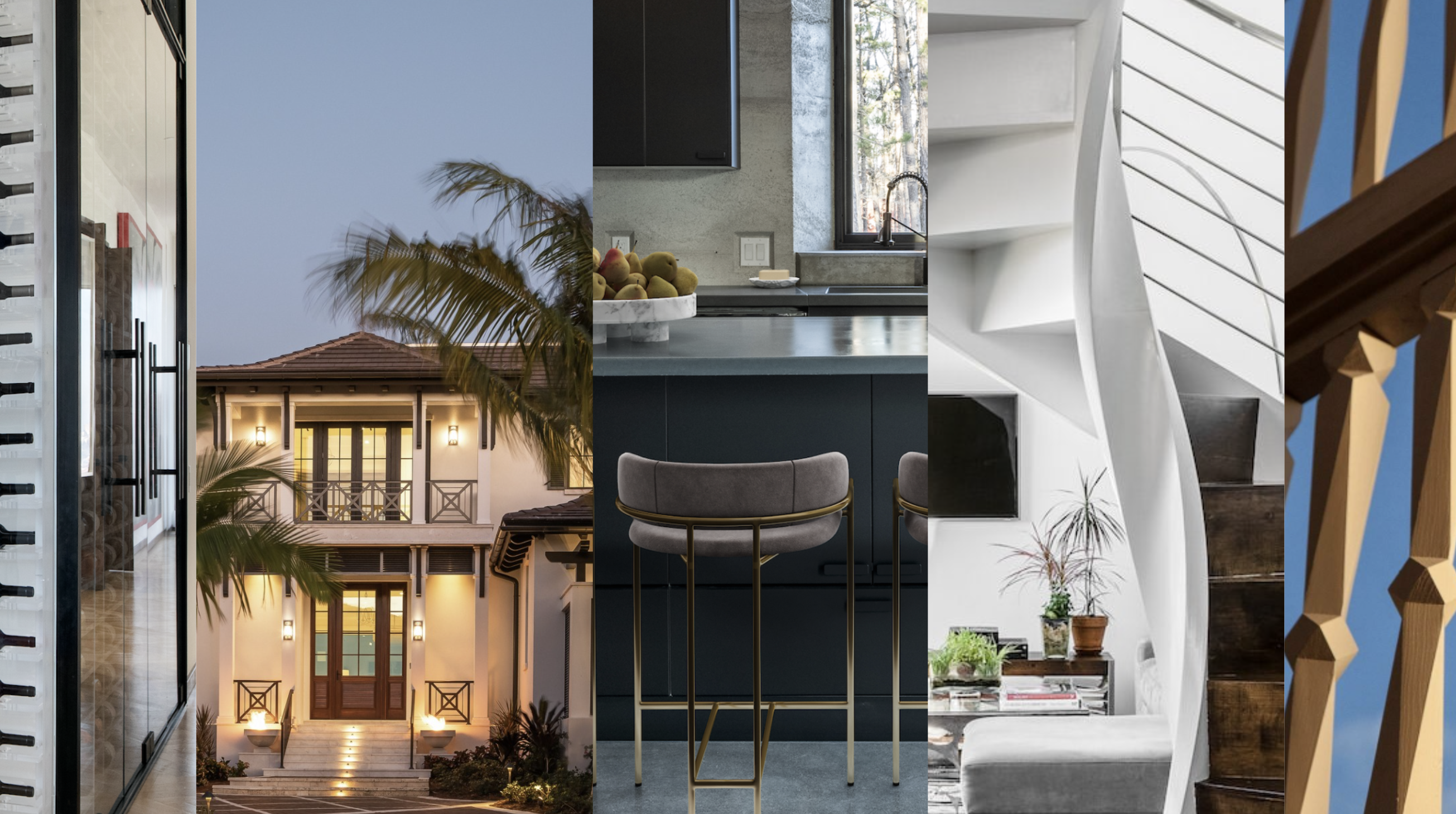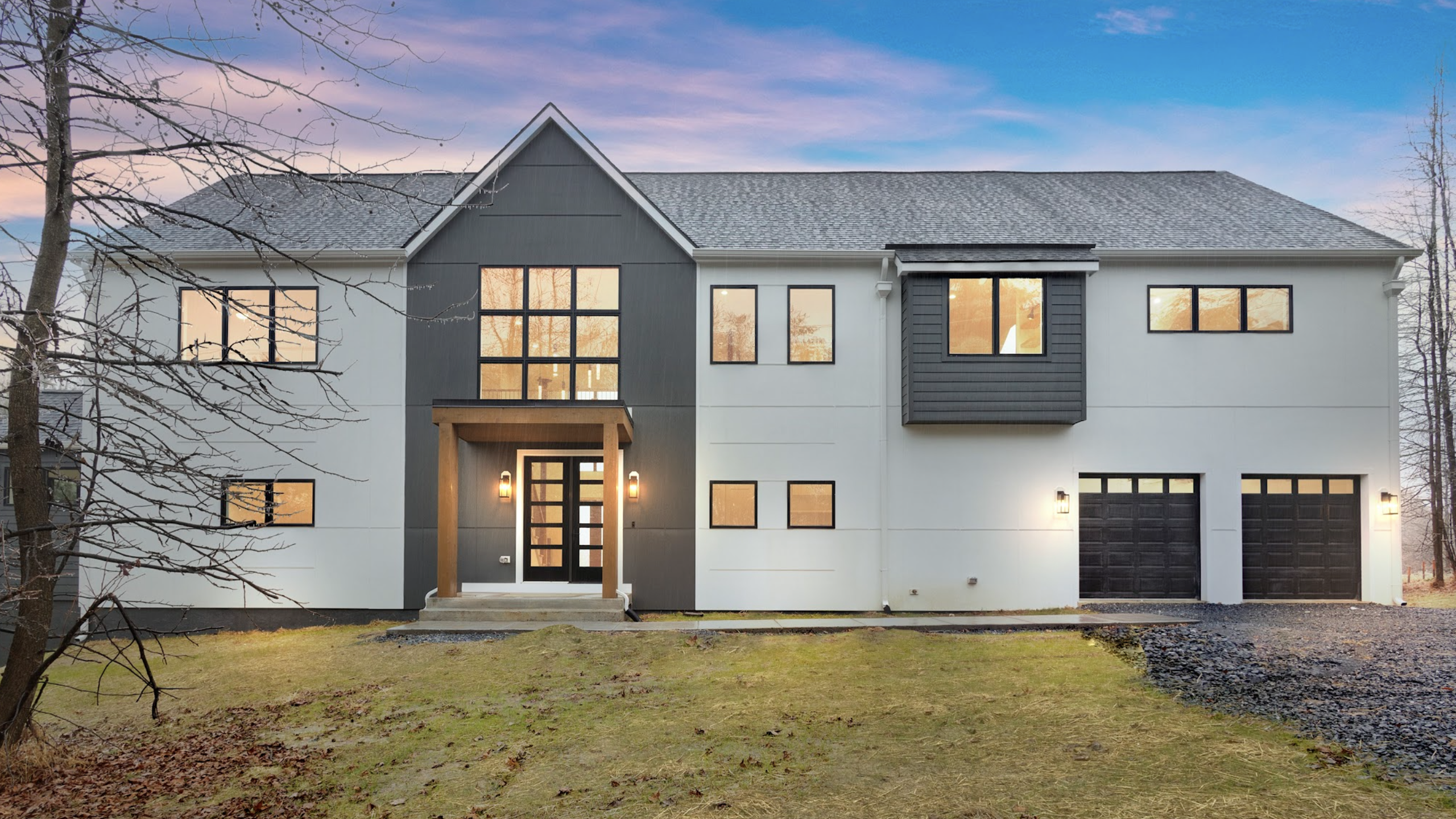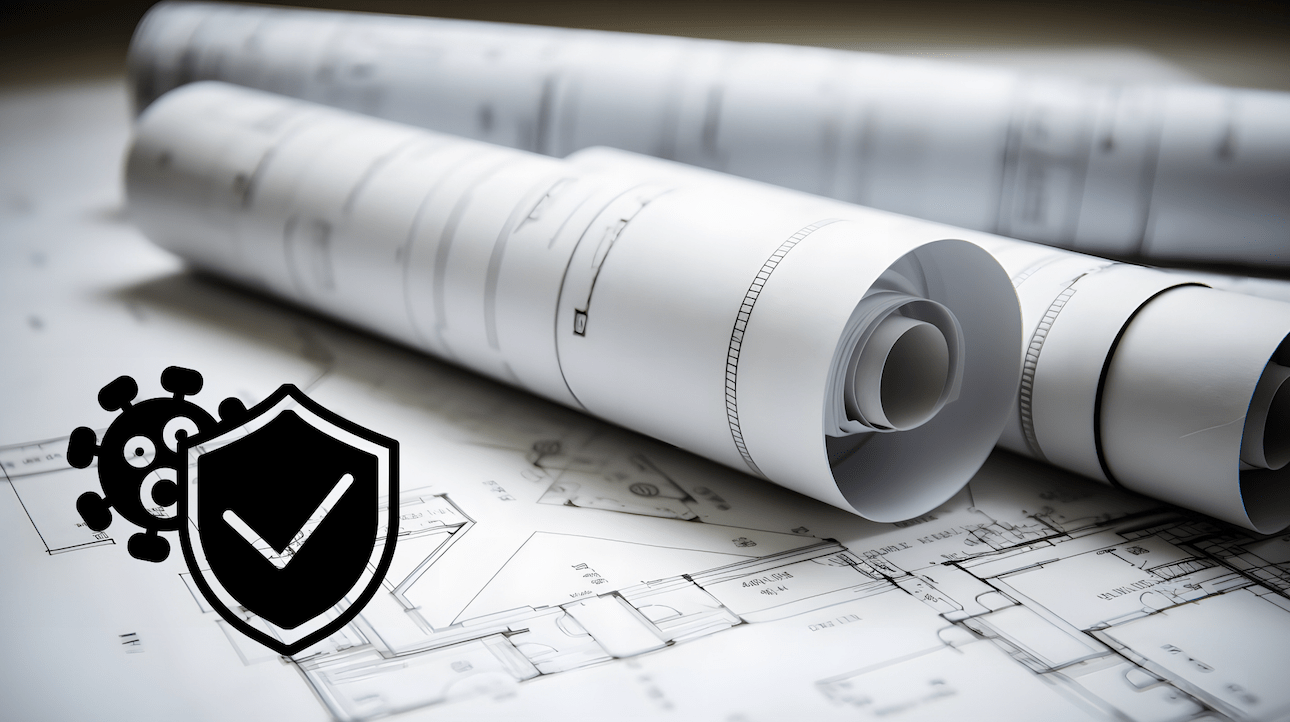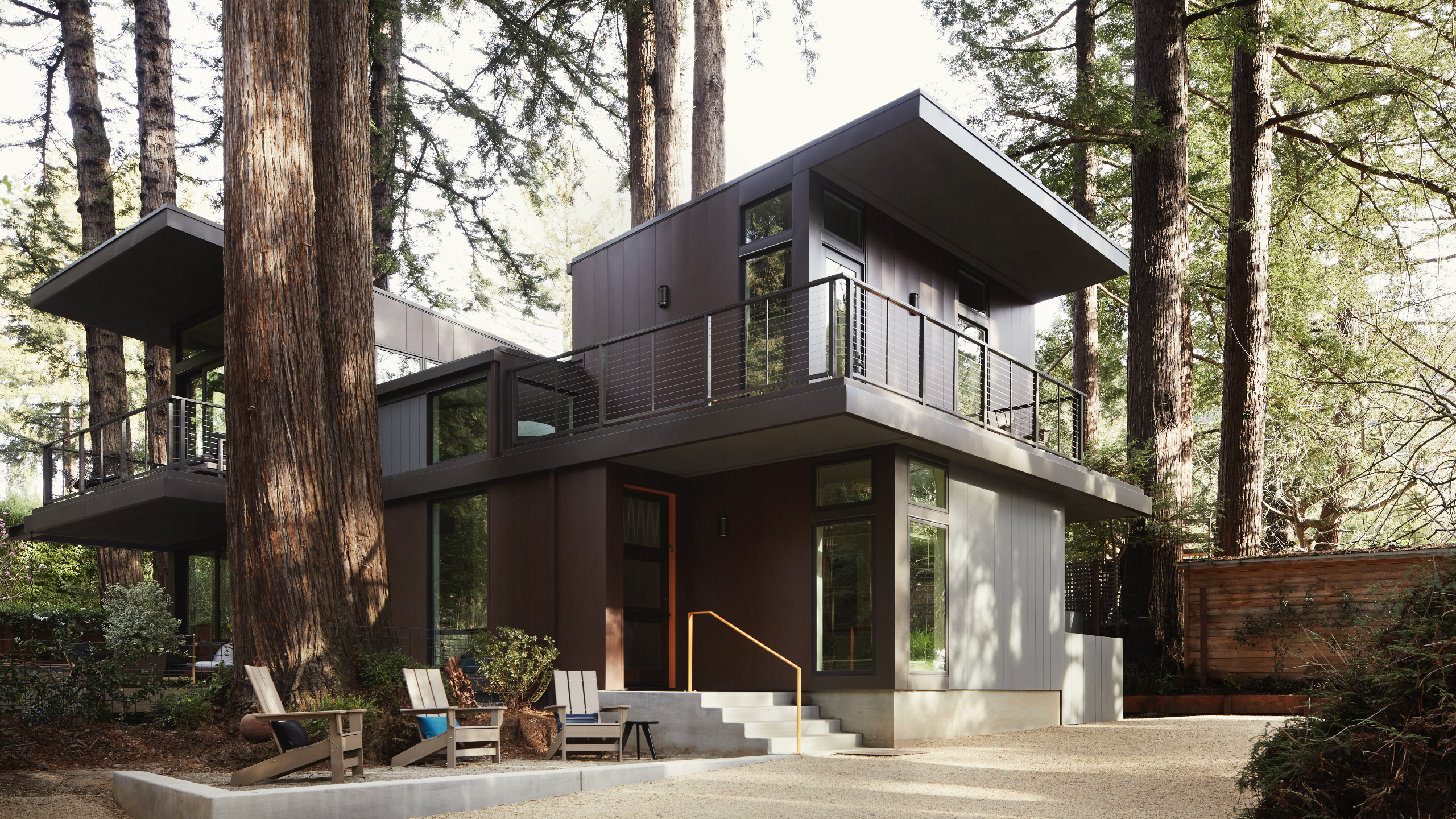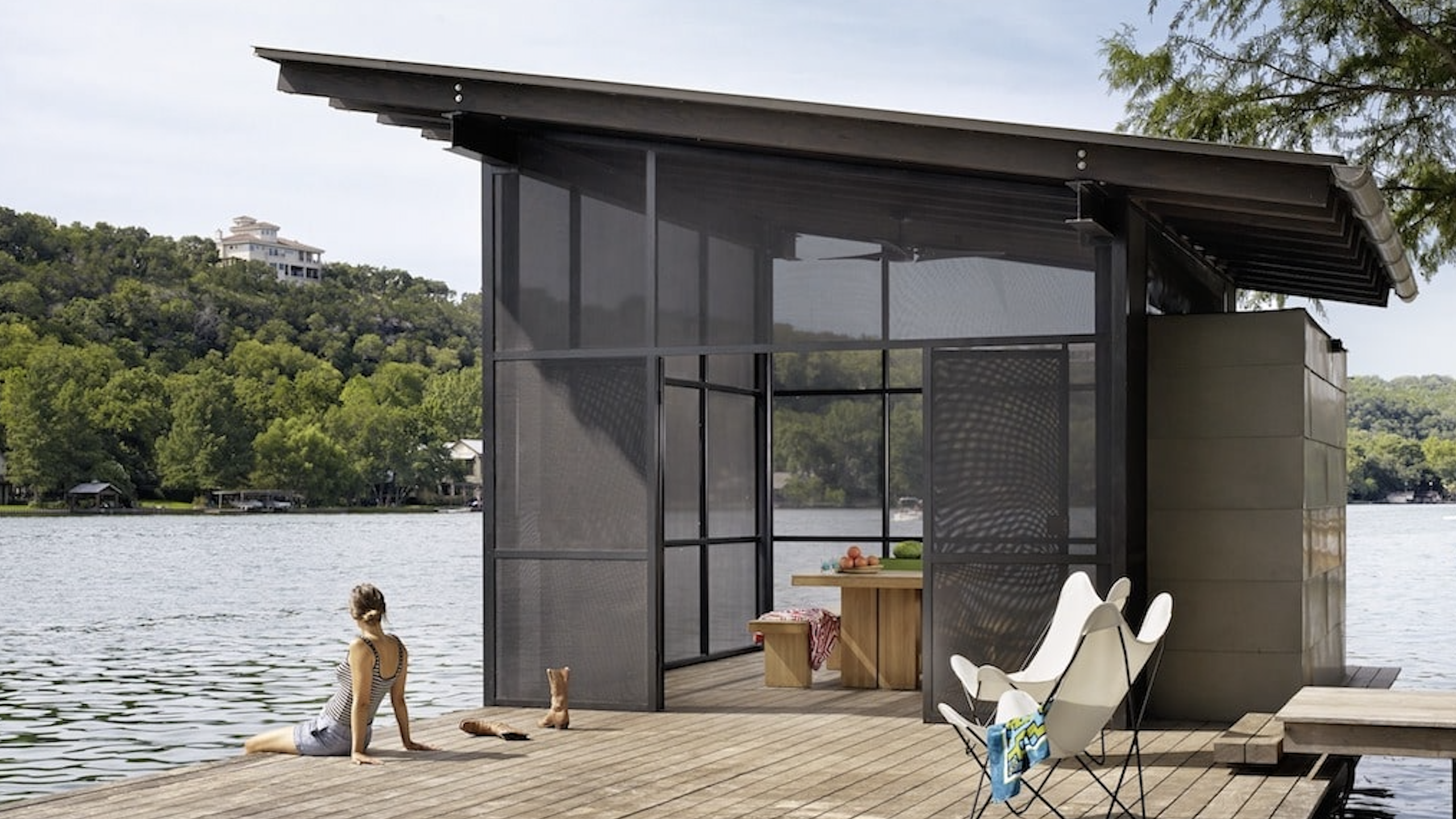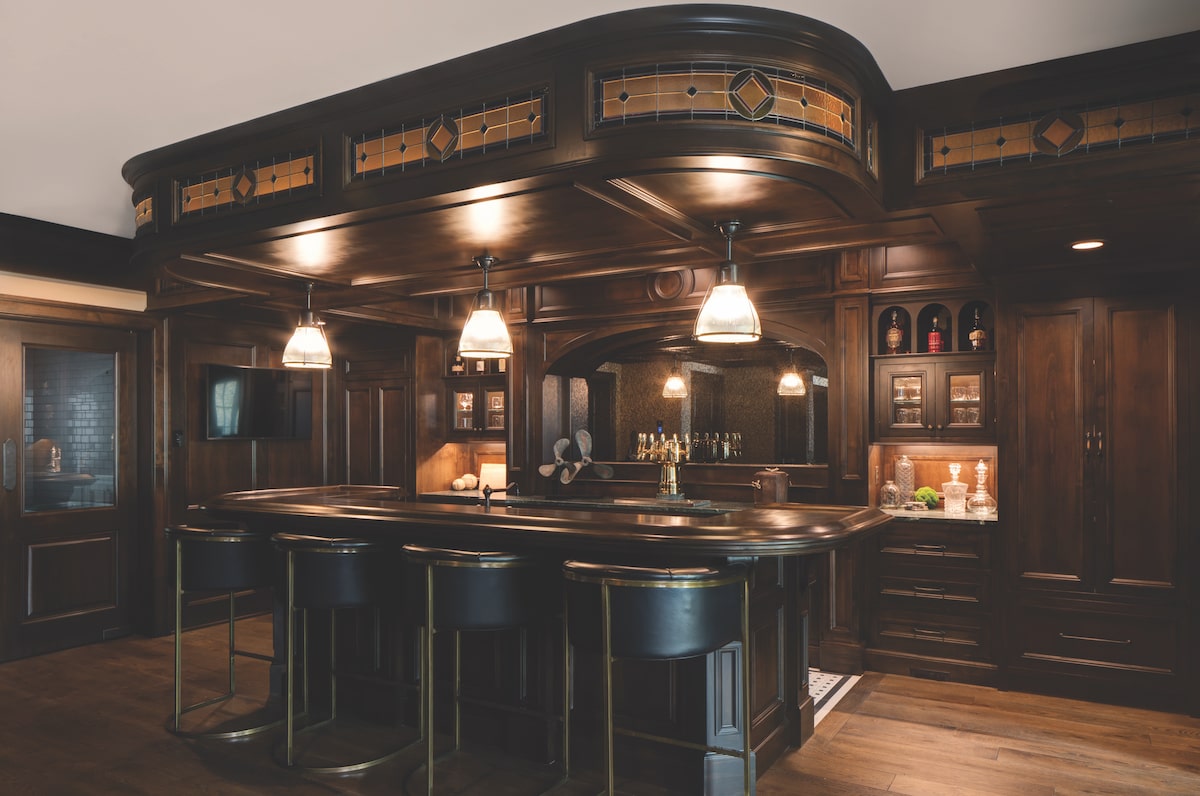Many custom builders, architects, and designers have become adept at creating green homes that offer tangible benefits such as lower operating costs and improved indoor air quality and comfort. But there’s more than one way to achieve sustainability. As this article shows, a modestly sized home that maximizes passive solar heat gain and ventilation can work just as well as a large one where the clients opted for a hefty investment in alternative energy sources.
Making every inch count
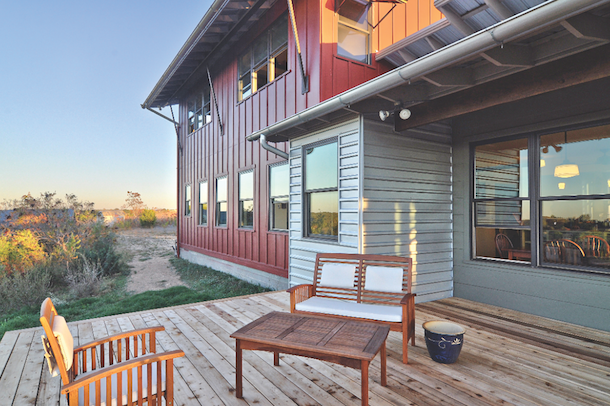
Since all views are to the northeast, Brown placed windows and roof overhangs where they would get minimal solar heat gain during the day. On cool nights, the family enjoys gathering around the wood stove on the screened porch.

The living spaces aren’t large, but they connect and flow together well, “so it doesn’t feel like you’re in a tiny space,” says architect Tim Brown. Transom and clerestory windows can be opened to allow breezes to naturally ventilate the house.
Architect Tim Brown’s home in Austin, Texas, is 2,075 square feet. Brown provided the following details:In a blower-door test, the home scored 0.7 air changes per hour (ACH). To meet Energy Star requirements, that figure must be 2.5 ACH or less; 1 ACH is considered excellent.
In a duct-blaster test, air leakage was 3.8 percent. The acceptable level of leakage is 10 percent.The roof is Galvalume, an aluminum-zinc alloy coated sheet steel made by BIEC International. A portion of the home is sided with the same material.Three filters—sediment, charcoal, and ultraviolet—purify collected rainwater for drinking. The water is gravity-fed into two 10,000-gallon tanks, where it’s stored until needed.The home has low-flow faucets, dual-flush toilets and an efficient electric water heater that loses only one degree in temperature per day when it’s shut off. A recirculation system at each shower and bathtub ensures that water isn’t wasted as it heats up.Native grasses and plants don’t require irrigation.Brown convinced his trash-collection company to haul away recyclable materials from the site, which earned him extra points from the Austin Energy Green Building program.
One of the family’s favorite spots is the screened porch on the west side. Two 3-foot-wide doors open onto it from the house. “We naturally ventilate four months out of the year,” Brown says.
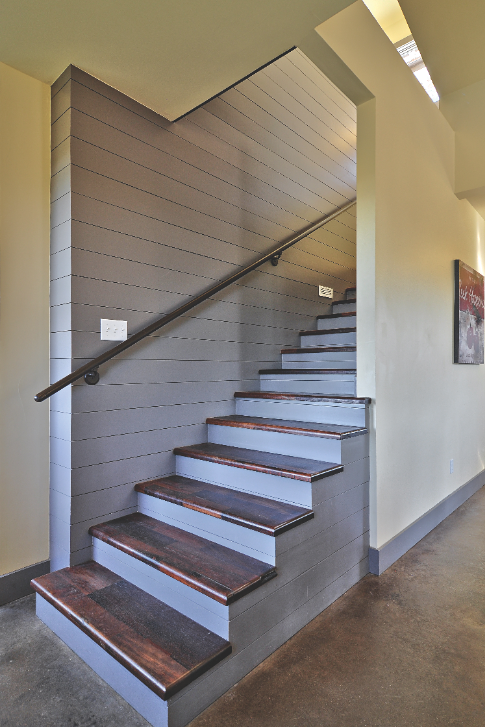
Reclaimed merbau, an Asian hardwood, was used for the stair treads and the countertop on the kitchen island. The shiplap detail on the wall is another flourish that builder Cody Schmidt especially likes.
Balancing size with efficiency

Architect Jack Kemper broke down the mass of the house into smaller pieces to reduce the scale, and oriented it to capture lake views and take advantage of passive solar heat gain. “We weren’t shooting for anything formal or European,” says Kemper. “It’s an amalgamation, with elements of Craftsman style in the porch columns and French style in the steep hip roofs.” Photos: Olson Photographic
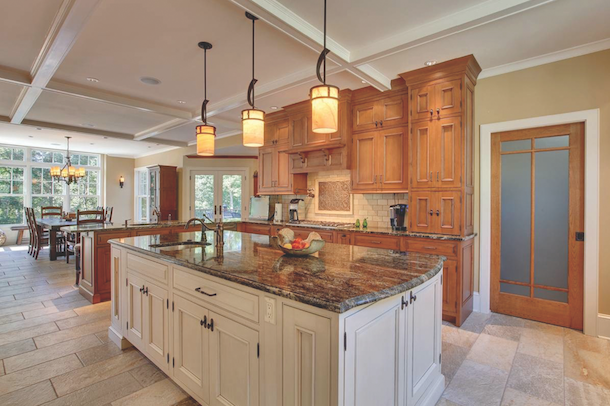
In lieu of a formal dining room, the clients have a large eat-in kitchen with a coffered ceiling, a walk-in pantry, a large island, and two-tone stained and painted custom cabinets.
Including the walkout lower level, this Connecticut home is 7,906 square feet, but it’s no energy hog. Here are the details:The HERS index of 43 is 56 percent better than a comparable code-built home.According to a blower-door test, the air infiltration value of the heating and cooling system is 5400 CFM at 50 Pascals.Five geothermal air-to-water, two-stage geothermal heat pumps exchange heat through closed-loop well fields located more than 400 feet below ground. The homeowners will recoup their investment in the geothermal system in 10 years, says builder John Ricci.Solar roof panels collect energy to heat water in large storage tanks, providing all the hot water for the family’s needs.
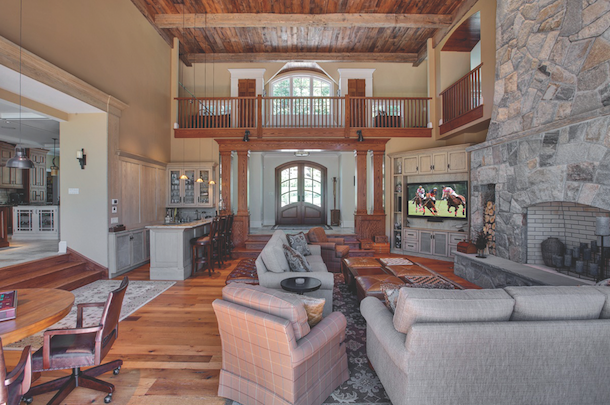
The great room has 21-foot ceilings with reclaimed wood beams that had to be crank-lifted into place. Rounding out the rustic look is a two-story stone fireplace and hickory columns in the entry foyer.

This open, gazebo-shaped porch, supported by tall pillars, has a flat-screen TV, a gas fireplace, a hot tub and views of the lake, the mountains and the swimming pool.
Related Stories
Custom Builder
Telling a Story That Preserves the Past
Custom builder and historic restoration and preservation expert Brent Hull walks us through the careful details of his Pennsylvania Farmhouse project
Custom Builder
2023: A Year of Case Studies
A look back at the custom homes and craftsman details we spotlighted last year
Customer Service
A Smart Home Built Smart
Custom builder August Homes blends efficient, high-tech home automation systems with high-performance, sustainable building strategies
Construction
Building a Custom Wine Cube in an NYC Penthouse
An 11-foot wine cube enveloping a pantry is the stand out features of this customized West Chelsea penthouse
Case Studies
New Pandemic Task Force to Enhance Building Safety
A soon-to-be-appointed Pandemic Task Force seeks to strengthen the built environment in the face of disease-related threats
New Home
Hosting Multiple Generations for Generations to Come
Despite juggling numerous program and site considerations, architect Joel Wenzel designed a long-lasting, multi-generational retreat that nestles seamlessly into its bucolic surroundings
Custom Builder
Merging Ancient Construction With Modern Living
This vacation home pushes the boundaries of traditional log construction techniques and incorporates elegant details elevating this typically rustic building method
Custom Builder
Making a Custom Home Among the Redwoods
Designing a not-cramped-feeling, three-bedroom home on a tight lot surrounded by protected redwoods was no easy task. But through high ceilings, abundant glazing, and thoughtful spatial detailing, architect Heidi Richardson achieved the improbable.
Projects
A Lakefront Dock That Embraces Indoor/Outdoor Living
This screened dock on Hog Pen Creek in Austin, Texas takes its design cues from the home's numerous indoor/outdoor living spaces
Architecture
A London Pub on the Lake
This custom home on Minnesota’s Lake Minnetonka incorporates the homeowners' love for London into its antique walnut bar



